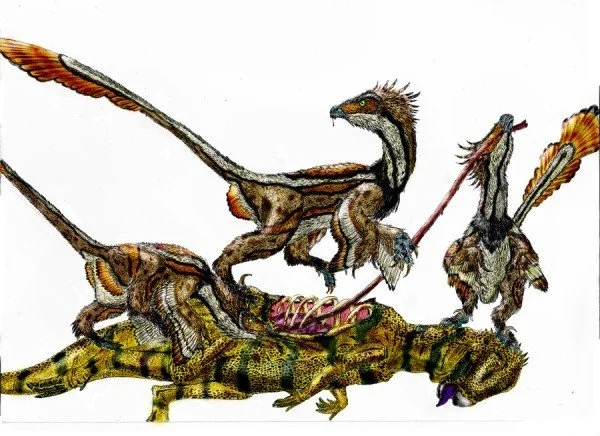Variraptor (Var Thief)
Basic facts
6.5 feet (2m) length
Late Cretaceous
Europe
Carnivore
Variraptor, a small theropod dinosaur from the Late Cretaceous period belongs to the Dromaeosauridae family, which includes other well-known raptors such as Deinonychus and Velociraptor.
The first remains of Variraptor were discovered in the Grès à Reptiles Formation of France in the early 1990s. The dinosaur was later identified and described by paleontologists S. L. Brusatte and others in 1997. The name "Variraptor" is derived from "Var," a river close to the region in France where the fossil was found, and "raptor" (thief) reflecting its classification as a theropod.
Variraptor was a small theropod dinosaur, measuring approximately 6.5 feet (12 meters) in length and weighing around 45 kilograms. Its body was characterized by a lightweight and agile build, enabling it to move swiftly and efficiently.
Like other dromaeosaurs, Variraptor possessed sharp, recurved teeth, ideal for catching and tearing its prey. It had long, slender hind limbs with a retractable sickle-shaped claw on its second toe, a hallmark feature of dromaeosaurs that was likely used for capturing and immobilizing its prey.
As a social animal, Variraptor likely hunted in packs, cooperating with its fellow pack members to take down larger or more dangerous prey. Pack hunting provided several advantages, including increased hunting success, the ability to defend against rival predators, and the chance to share resources among the group.
